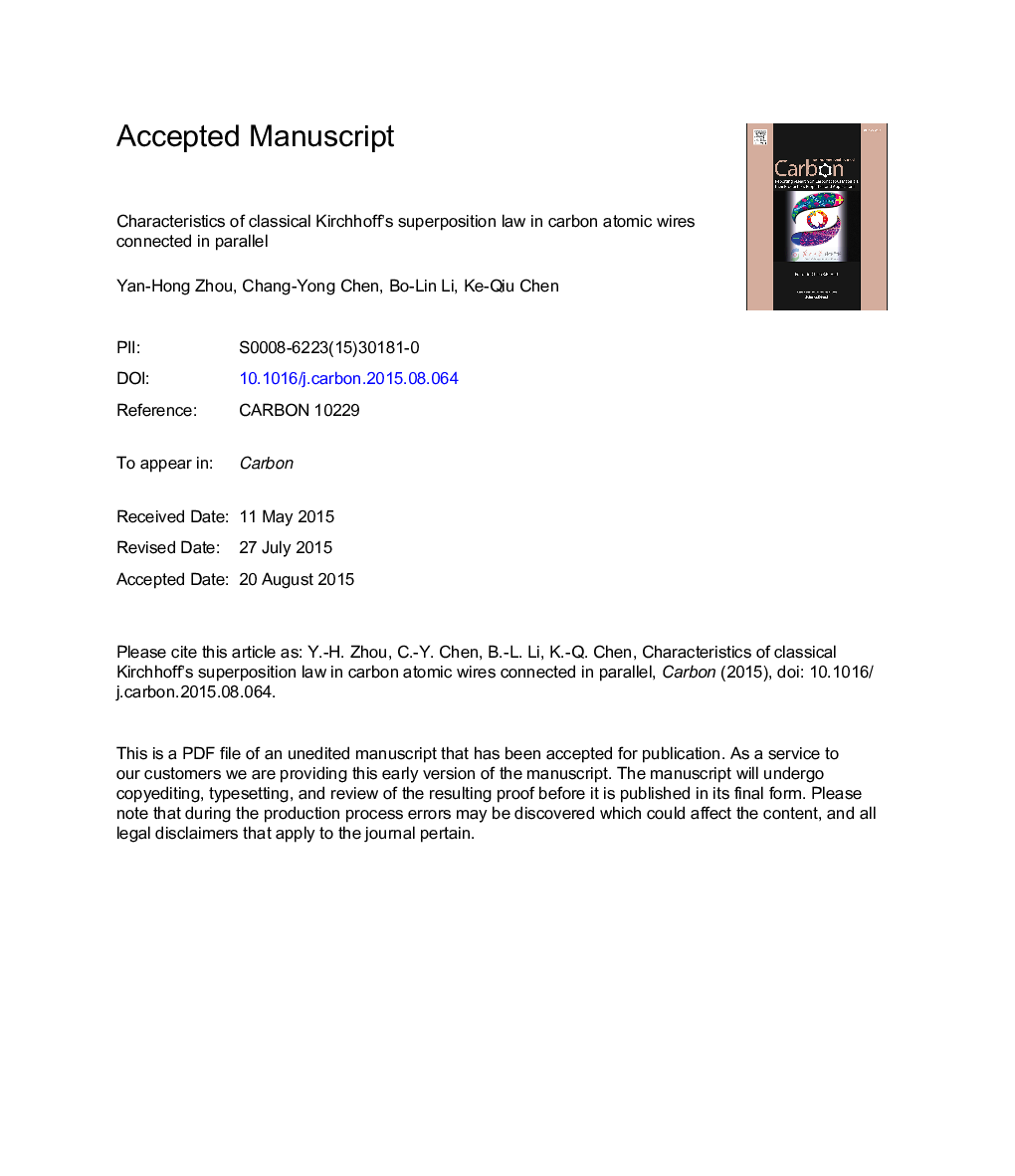| Article ID | Journal | Published Year | Pages | File Type |
|---|---|---|---|---|
| 7851268 | Carbon | 2015 | 28 Pages |
Abstract
The classical Kirchhoff's superposition law is hard to realize in the molecular scale devices because the coupling between the juxtaposed molecules can lead to constructive or destructive quantum interferences [Vazquez et al. nature nanotechnology 2012, 7, 663; Zhu et al. Phys. Rev. B 2014, 89, 085427]. In view of this, we try to eliminate the quantum interference between the juxtaposed molecules by increasing the distance between them. Simple junctions of carbon atomic wire(s) coupled to zigzag graphene nanoribbon electrodes are chosen as our model. Interestingly, fine Kirchhoff's superposition law phenomenon is found when the distance between the two carbon atomic wires reaches 15.5 Ã
. At the distance 15.5Â Ã
, the conductance for the double carbon atomic wire (DCAW) configuration is 1.96 times of that for single carbon atomic wire (SCAW) configuration and the current across the DCAW configuration keeps nearly two times of that across the SCAW configuration at the applied biases. In addition, the conductance superposition effect becomes better when the distance between the two wires increases further and the spin filtering effect is enhanced in the DCAW configuration.
Related Topics
Physical Sciences and Engineering
Energy
Energy (General)
Authors
Yan-Hong Zhou, Chang-Yong Chen, Bo-Lin Li, Ke-Qiu Chen,
